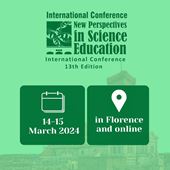What Math Are You Teaching? ISAT: A Tool for Individual and Organizational Analysis of Math Activities
Yossi Elran, Davidson Institute of Science Education (Israel)
Naama Bar-On, Davidson Institute of Science Education (Israel)
Lior Ben-Gai, Davidson Institute of Science Education (Israel)
Michal Elran, Davidson Institute of Science Education (Israel)
Tamar Levy, Davidson Institute of Science Education (Israel)
Tal Levy, Davidson Institute of Science Education (Israel)
Michael Gorodin, Davidson Institute of Science Education (Israel)
Aurelie Lachish-Zalait, Davidson Institute for Science Education (Israel)
Liat Ben-David, Davidson Institute of Science Education (Israel)
Abstract
When we teach or learn math, whether in a pure, mathematical context, i.e., a math class, or supplementary to a general context, for example, a discussion about symmetry in a course on the history of art, the nature of the math can be significantly different [1]. Yet, we are not always aware of this. Understanding what, how, and why we teach math in different learning situations is important for individual educators and whole organizations [2]. Individual educators can use this information to better design their lesson plans and improve their instruction [3]. On the management level, organizations can benefit from this analysis to make better fact-based decisions based on the difference between the desired policies and the existing practices [4]. This paper presents a tool for educators, organization leaders, and stakeholders to analyze the nature of the math taught in many learning situations. These can be short-term, such as classroom lessons and extra-curricular activities, or long-term, such as learning units, semester-long courses, or even learning that spans several years. We will show how this tool has been successfully implemented in different learning situations in a large science education organization [5] and discuss how to further use this tool in other disciplines.
|
Keywords |
Mathematics education, analysis tool, curriculum assessment |
|
REFERENCES |
[1] Otte, M. (2007). Mathematical history, philosophy and education. Educational Studies in Mathematics, 66(2). pp 243-255. [2] Blumenfeld, P. C. (1992). Classroom learning and motivation: Clarifying and expanding goal theory. Journal of Educational Psychology, 84. pp 272-281 [3] Bar, C., Elran, M. & Elran, Y. (2013). Mind the Gap: Bridging the Gap between Scientists, Mathematicians and Elementary School Students. New Perspectives in Science Education, 2nd Edition. Florence, Italy. [4] Chalmers, C., Carter, M., Cooper, T., & Nason, R. (2017). Implementing “Big Ideas” to Advance the Teaching and Learning of Science, Technology, Engineering, and Mathematics (STEM). International Journal of Science and Mathematics Education, 15(1). pp 25-43. [5] Lachish-Zalait, A., Ben-Horin, Y., Eckstein, O., Elgali, Z., Elran, Y., Bar-On, N. & Ben-David, L., (2018). The Davidson Institute of Science Education: Building bridges between science and people. New Perspectives in Science Education, 7TH Edition. Florence, Italy. |
 New Perspectives in Science Education
New Perspectives in Science Education





























